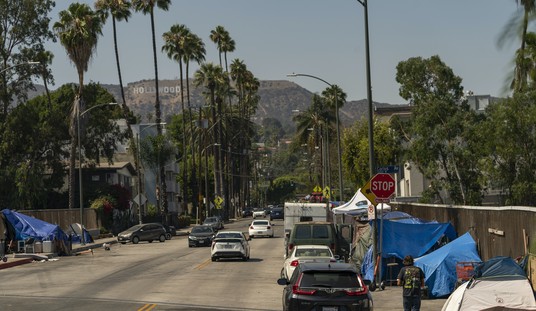When it comes to reporting on matters concerning the Los Angeles Police Department, I’ll give the writers and editors at the Los Angeles Times credit for one thing: they’re consistent. But in the field of journalism, being consistently biased, lazy, and predictable is nothing to crow about.
Back in January, I wrote in this space on an L.A. Times story in which was alleged that officers from the LAPD’s Metropolitan Division were biased in that they “disproportionately stopped black drivers.” The story, by Times writers Cindy Chang and Ben Poston, followed what is for the Times a well-established formula in which the following steps are taken:
Present data without context;
Attempt to buttress the data with the opinions of so-called experts whose own biases go unexamined;
Present unquestioned the anecdotes told by people who claim to have been victimized by the police bias already “proven” through steps 1 and 2.
Now Chang and Poston have delivered again, following this precise formula in a 2,700-word article that appeared in the Times on Oct. 8. In this latest version of what is essentially the same story as the one that appeared in January, it is not just Metropolitan Division officers who are accused of racial profiling, but the entire patrol force. “Los Angeles police officers search blacks and Latinos far more often than whites during traffic stops,” say Chang and Poston, “even though whites are more likely to be found with illegal items, a Times analysis has found.”
The story is accompanied by charts and graphs that seek to depict the gravity and extent of the problem. One such graph plotted the “search rate” for blacks and whites in all of Los Angeles, showing that among the LAPD’s 21 patrol divisions, plus Metropolitan Division (which patrols city-wide), officers from just one station, Topanga Division in the west San Fernando Valley, searched whites more often than blacks. At every other station, the Times would have you believe, the officers are motivated by animus against blacks, with those working Metropolitan, 77th Street, Southeast, and Newton Division offending most egregiously.
I spent a good portion of my LAPD career working in 77th Street, Southeast, and Newton Divisions, and it is in these areas that Metropolitan Division officers spend much of their time in response to their elevated levels of violent crime. I can report without fear of contradiction that it’s possible to drive around for days in all three of these areas and never encounter a single white person, a small but relevant detail that for Chang and Poston did not merit inclusion in the article.
Yes, in a faint nod toward fairness Chang and Poston add a caveat: “Racial disparities in search rates do not necessarily indicate bias,” they write. “They could reflect differences in driving behavior, neighborhood crime rates, and other factors.” And they acknowledge the disparity in violent crime rates among the city’s ethnic groups, citing data contained in this LAPD report, but then they go on to dismiss this disparity as a cause for the one they find so troubling. Blacks, who make up 9 percent of the city’s population, commit 43 percent of its violent crime, including 52 percent of its robberies and 34 percent of its homicides. Whites, by comparison, make up 28 percent of L.A.’s population but commit 8 percent of its violent crime and just 5 percent of its robberies and homicides. Despite these grim but persistent statistics, Chang and Poston attribute to police bias the fact that blacks are stopped and searched more frequently than whites. Given these crime figures, it is ludicrous to expect they should not be.
Having made this dubious assertion, Chang and Poston then proceed to step 2 above and cite purported “experts” whose own biases go unexplored in the article. One of those quoted is Jack Glasser, a professor at the University of California at Berkeley, whose online biography informs us that among his areas of expertise are racial profiling and “unconscious social cognition.” He is also the author of a book titled Suspect Race: Causes and Consequences of Racial Profiling. (Speaking of robbery, you can purchase it on Amazon for a mere $44.95.) Prof. Glasser surely did not disappoint Chang and Poston when he said, “At its simplest level, it appears that blacks and Latinos are being subjected to a lower threshold of suspicion in order to be searched.”
Other “experts” quoted are Peter Bibring, senior staff attorney at the ACLU of Southern California, and civil rights attorney Constance Rice, both of whom have long demonstrated they can be relied upon when the L.A. Times needs a damning quote about the LAPD.
Moving on to step 3 in the article, the reader is introduced to alleged victims of these biased police practices. “For people who have been stopped and searched by the LAPD,” Chang and Poston write, “the experience can be humiliating.” They present the account of one Bryant Mangum, who in November 2017 “was driving home in his white BMW with tinted windows when he was pulled over by LAPD officers at gunpoint.” Chang and Poston go on to describe how one officer patted Mangum down while another searched his car. “The officers didn’t say why they pulled him over and didn’t ask permission to search the car,” they write. “They let him go without a ticket or a warning.” Mangum also claimed that when he first bought his BMW and it still had paper plates, he was stopped ten times in a single month.
And, since the article asserts the LAPD is biased not only against blacks but Hispanics as well, Chang and Poston, of course, were obligated to include a tale of woe from one Leo Hernandez, who told them LAPD officers stopped him twice in 2015. “Of course it felt like profiling,” he said.
It’s interesting to note that Mangum and Hernandez cited alleged injustices that occurred two and four years ago, respectively. If the LAPD’s bias is as endemic as Chang and Poston would have you believe, one presumes they should have uncovered abuses a bit more current. And note that the authors apparently made no effort to verify the allegations made by Mangum and Hernandez. Mangum’s claim to have been stopped ten times in a month strikes me as especially preposterous, yet Chang and Poston present it without question.










Join the conversation as a VIP Member